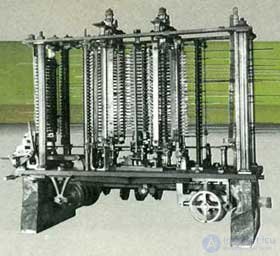Only 19 years after the death of Babbage, one of the principles underlying the idea of the Analytical machine, the use of punched cards, was embodied in the acting device. It was a statistical tabulator built by American Herman Hollerith to speed up the processing of the census results, which was conducted in the USA in 1890. Hollerith was born in Buffalo (New York) into a family of German immigrants. After graduating from Columbia University, he went to work at the census office in Washington. He arrived here just at the time when hundreds of employees began an exceptionally labor-intensive (seven and a half years old) manual processing of data collected during the 1880 census.
John Shaw Billings, a high-ranking census bureaucrat, in the future, Hollerith's father-in-law, suggested that tabulation could be made using punched cards, and Hollerith spent a considerable part of the following decade trying to develop such a system. It’s hard to say what brought Billings to this idea - perhaps Jacquard’s machine or perforated railway tickets, but one way or another he allowed Hollerith to work on the design of the system. By 1890, Hollerith had finished his work. In tests conducted at the census bureau, the statistical tabulator of Hollerith came out victorious in competition with several other systems, and the inventor was contracted to conduct the 1890 census. The Hollerith system was another stage in the history of computer development.
Hollerith's tabulator cards were dollar-sized. Each map contained 12 rows, each of which could be punched through 20 holes corresponding to such data as age, gender, place of birth, number of children, marital status and other information included in the census questionnaire of the American population. The agents who conducted the census recorded the answers of the respondents in special forms. Completed forms were sent to Washington, where the information contained in them was transferred to the cards by appropriate punching. Then the punch cards were loaded into special devices connected to a tabulation machine, where they were strung on rows of thin needles, one needle per each of 240 perforated positions on the map. When the needle fell into the hole, it passed through it, closing the contact in the corresponding electrical circuit of the machine; This in turn caused the counter consisting of rotating cylinders to move one position forward.
 | 1890. The Hollerith Tabulator was intended for the statistical processing of punched cards. |
The Hollerith machine was so fast that the preliminary calculations were completed in 6 weeks, and the full statistical analysis took two and a half years. Over the past decade from the previous census, the US population grew by almost 13 million, reaching 62,622,250 people, but processing the results of the 1890 census took about three times less time than the previous one.
Hollerith was awarded several prizes, received a lot of praise and the title of professor at Columbia University. “This device,” wrote the Electrical Engineer magazine, “it works as unmistakably as the machines of the immortal gods, but far surpasses them in speed.” Hollerith proudly called himself "the first statistical engineer", however, it was in fact the case. He organized the Tabulating Machine Company (Tabulating Machine Company) and sold them to railways and government offices. Hollerith bought the cars of Tsarist Russia, deciding to conduct a census of the population at the present level.
Hollerith’s business was immediately successful, and later on it became more and more successful. Over the years, it has undergone a number of changes - mergers and renames. The last such change occurred in 1924, 5 years before the death of Hollerith, when he created IBM (International Business Machines Corporation). Now, a century after that, when Charles Babbage worked heroically on the creation of the Analytical Machine. IBM is the largest industrial company in the world to realize its dream of (the machine of the most universal nature. ”But even Babbage, with his unbridled imagination, could not possibly have foreseen what forms his dream machine would eventually take.

Comments
To leave a comment
History of computer technology and IT technology
Terms: History of computer technology and IT technology